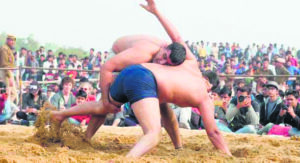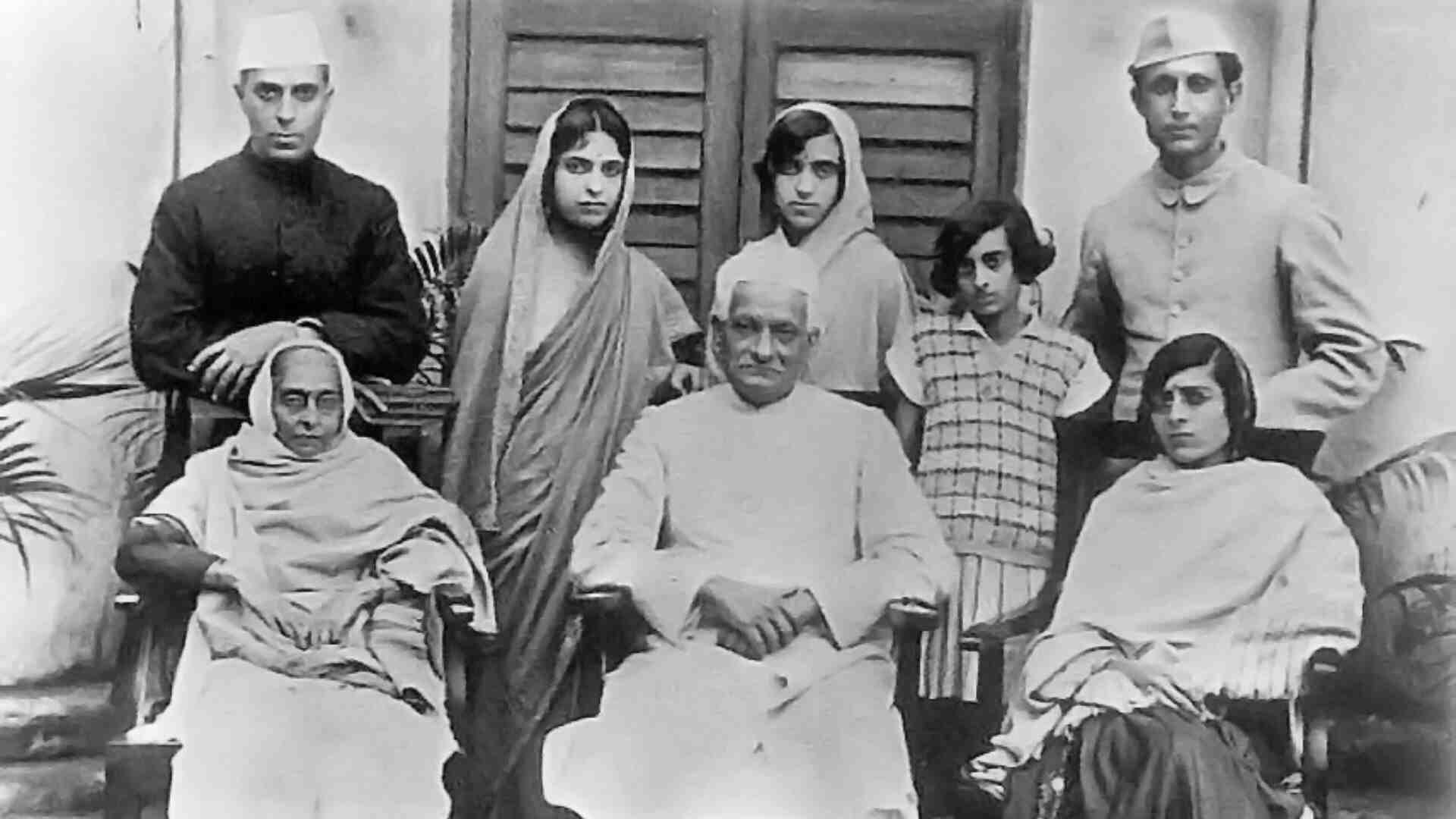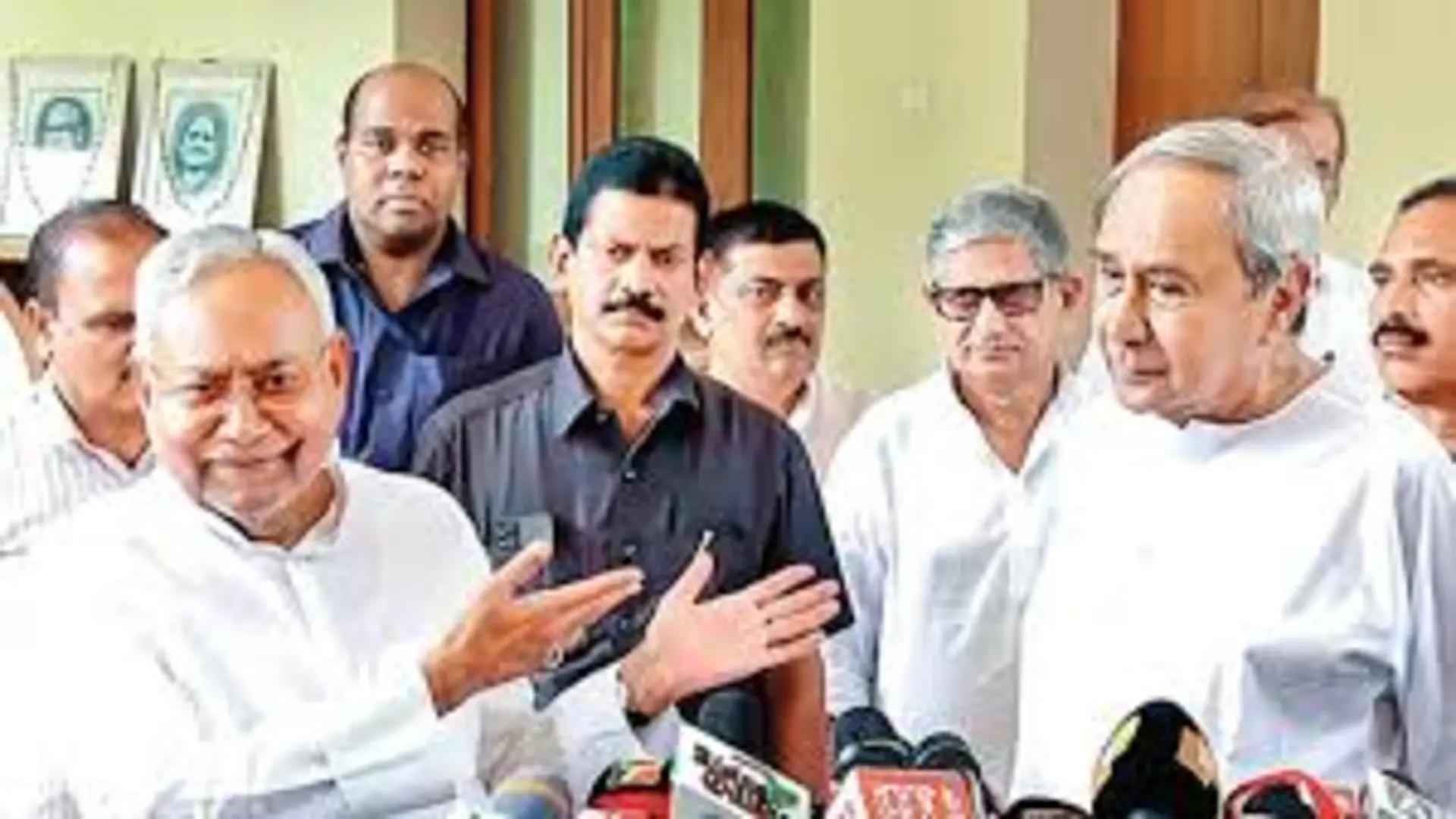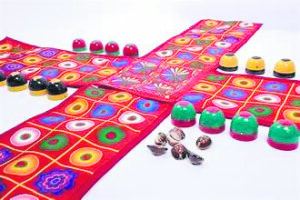The history of ancient Indian sports reflects the diversity and vibrancy of the culture, where physical activities were not only a means of recreation but also held cultural, religious, and strategic significance.
India, a land rich in history, tradition, and culture, has always been a hub for activity in many aspects. The sports history of India dates back to the 4th Century BCE when traditional sports such as Kho-Kho and Kabaddi originated. Dholavira, the world’s oldest terraced arena, was built in Kutch, Gujarat, around 3000 BC, evidencing the existence of sports in India. Ancient texts like the Mahabharata, written around the 3rd century BCE, mention martial arts and archery as activities that were carried out during that era.

Even indoor games like Chess and Snakes & Ladders have origins in ancient India, in the form of games of Chaturanga and Gyan Chauper, respectively. The emphasis on holistic development, including physical fitness, was an integral part of ancient Indian society.
Today we will understand the spectacular journey of Indian sports from ancient Indian to the modern times.
Ancient India
If we deep dive into the history we will find out that the world’s oldest stadium with terraced stands was constructed in Dholavira, Gujarat, during the third millennium BCE. Two stadiums have been identified at the ancient site: one is considered a ceremonial ground, and the other a small stadium.
Sports were evident during the Vedic era. Physical culture in ancient India was fuelled by religious rights. The mantra in the Atharvaveda says, “Duty is in my right hand and the fruits of victory in my left.”. This resembles the Olympic Oath: “For the Honour of my Country and the Glory of Sport.”
The modern game of badminton developed from an English children’s game known as battledore and shuttlecock, a game that was most prominent in ancient India. The battledore was a paddle and the shuttlecock was a small feathered cork, colloquially called a bird.
India has a rich heritage of martial arts. In the Mahabharata and Ramayana, Bhima and Hanuman were the greatest Gadadhari (transl. One who fights with Gada (the Mace weapon)) and were skilled in wrestling. Lord Krishna’s brother Balarama was a great Gadadhari. During the era of the Mahabharata, Pandava prince Arjun and Ekalavya were expert archers. Kalaripayattu is practised by some as a traditional martial art in South India. Martial arts was one of the earliest sport used for military purposes. This too was limited to only the warrior caste, the Kshatriya. In ancient Greece, the patriarchy was very strict, and likewise ancient India restricted their sports to only men.
Board games, including chess and snakes and ladders, originated from the ancient Indian games chaturanga and gyan chauper respectively; these were later brought to foreign countries, where they would be modernized. Chaturanga taught ancient Indians how to strategise for war, and the other board games often imparted spiritual values. Several Indian variations of tag, such as kabaddi and kho-kho, originated in prehistoric times, with kho-kho being played as far back as the fourth century BCE. Atya-patya, a variant of tag, was mentioned in the Naṟṟiṇai (written in 300 CE). Kabaddi and atya-patya in particular were used for military training purposes.
Mughal Period
During the rule of the Mughal Empire, pehlwani, a form of wrestling, was developed by combining native malla-yuddha with Persian varzesh-e bastani. Several other activities were partaken in for recreation, such as hunting, gambling in dice-games, etc.
British Era
The Indian Hockey team at the 1936 Berlin Olympics, later going on to defeat Germany 8–1 in the final. During the colonial period, British India competed at six Olympic Games, winning medals in field hockey. British sports were introduced into India during that period. Some Indians were variously participating in British sports to rise up the social hierarchy by imitating their colonisers as well as aiming to achieve victory against the British in their sports. The British also aimed to spread their sports among Indians as a way of spreading British values. Efforts were made to develop the native games of India during this time period; this led to the successful standardisation of games such as kabaddi and kho-kho, as well as their demonstration in the 1936 Summer Olympics.

In the early days, the British began clubs, which only whites could join. These clubs were a place where men could gather together to drink, socialize, and play sports. British soldiers would play British sports as a way of maintaining fitness, since the mortality rate for foreigners in India was high at the time, as well as to maintain a sense of Britishness; in the words of an anonymous writer, playing British sports was a way for the British to “defend themselves from the magic of the land”. The different games played in the clubs would be cricket, badminton, rugby, golf, and rowing.
Snooker originated in the late 19th century among British Army officers stationed in India. Modern polo originated in British India in the 19th century in Manipur, where the game was known as Sagol Kangjei, Kanjai-bazee, or Pulu. The name polo is the anglicized version of the lattermost term. The first polo club was established in Silchar, Assam, in 1833. The oldest polo club still in existence is the Calcutta Polo Club, which was established in 1862. Dorabji Tata, with the support of Dr. A.G. Noehren, the then-director of YMCA, established the Indian Olympic Association in 1927.
One of the world’s earliest football clubs, the Mohun Bagan was established in 1889. The club was formed when The Football Association began making standard rules for football.
Indian Sports in the Global Platform
The British used sport as another conduit of transferring British socio-political ideas, culture, and beliefs into the fabric of India’s system. As Australian author Brian Stoddart writes in his article on British sports and cultural imperialism, “Colonial governors were especially important in emphasizing cricket as a ritual demonstration of British behavior, standards, and moral codes in both public and private.” Despite many Indians being a part of white-dominated sports teams, there was an inevitably constant re-emphasis of the superior and inferior race ideology within the teams. The British believed that the Indians were the inferior and effeminate race, taking the opportunity of sport as a mission to mold, reshape and therefore improve the Native race into a stronger, more physically capable race.
The theory that Indians resisted British colonialism through sports to regain power over their country has been evident in various scholarly articles, books, and monographs. Specifically, in the 1963 memoir Beyond a Boundary, Tranidian Marxist intellectual C. L. R. James compares Indians on the field to Greek drama plays: “selected individuals played representative roles which were charged with social significance.” The author explains that there is irony between the English origins of the sport and the means of which Indians use it as a way to express their national identity – an identity which they feel was stolen from them as a result of the British Raj or ruling.
Through the lens of James’ memoir, cricket evolves into a nuance where Englishness intersects with West Indian identity formation, both in and beyond the field. Indians used sports as a gateway or an opportunity to regain national pride and identity, ultimately fighting against the British narrative. The colonized therefore developed their own physical strength and power while confronting and rejecting the components of imperial ideology. They developed proud self-image throughout time as a significant step for achieving freedom and establishing popular sovereignty, which underscores the revolutionary power of resistance among Indians against their British colonizers through harvesting strength and national self-determination and identity.
Post-Independence
The Eden Gardens in Kolkata, established in 1864, is the oldest cricket stadium in India. It has been part of several historic cricket matches. When India won the 1983 Cricket World Cup, cricket rose to popularity, while field hockey was declining. International sport and sporting leagues quickly grew in India after the economic liberalisation of the 1990s, which allowed more money to be invested into sports. The Indian Premier League (IPL), which started in 2007, quickly became the most dominant league in the country and is highly influential in global cricket; by 2022, it was only behind America’s National Football League in terms of being the most valued league in the world on a per-match basis. Several other sports leagues quickly popped up after the IPL, with the Indian Super League becoming one of the biggest leagues and playing a significant role in Indian football. Other leagues (such as the Pro Kabaddi League, Ultimate Kho Kho, and the Pro Panja League) contributed to the modernisation of indigenous sports. Kabaddi has become an international sport, with countries such as South Korea and Iran playing it.
India founded the Asian Games, which is considered to be the world’s second-largest sporting event behind the Olympic Games as a way to make itself relevant in the new post-colonial world order. It hosted the Games in New Delhi for the inaugural edition in 1951 and again in 1982. The current Ministry of Youth Affairs and Sports was initially set up as the Department of Sports in 1982 at the time of organisation of the Games in New Delhi. Its name was changed to the Department of Youth Affairs and Sports during International Youth Year in 1985.
India has also hosted and co-hosted several international sporting events, including the 1987, 1996 and 2011 Cricket World Cups, the 2003 Afro-Asian Games, the 2010 Hockey World Cup, and the 2010 Commonwealth Games. Major international sporting events annually held in India include the Chennai Open, the Mumbai Marathon and the Delhi Half Marathon. The country hosted the first Indian Grand Prix in 2011. The largest stadium in the world, the Narendra Modi Stadium, is in India.
The remarkable journey of Indian sports has major achievements as below
Cricket Dominance: Cricket is undoubtedly the most popular sport in India. The country has a massive cricket fan base, and the Indian Premier League (IPL) is one of the most-watched and lucrative cricket leagues globally.

Field Hockey Legacy: India has a rich history in field hockey and has won eight Olympic gold medals in the sport. The golden era for Indian hockey was from 1928 to 1956, during which the national team remained undefeated in Olympic competition.

Kabaddi Dominance: Kabaddi, a traditional Indian sport, has gained international recognition, especially through the Pro Kabaddi League. The Indian national kabaddi team has been highly successful, winning multiple gold medals in the Asian Games.

Chess Prowess: India has produced several world-class chess players, including Viswanathan Anand, who became the World Chess Champion in 2000. Chess is widely followed and played in the country, with many young talents emerging on the international scene.
First Asian Games Host: India holds the distinction of being the first Asian nation to host the Asian Games. The inaugural edition took place in New Delhi in 1951.
Olympic Achievements: India has performed well in recent Olympic Games. Notably, weightlifter Mirabai Chanu won a silver medal in the 2020 Tokyo Olympics, marking a significant achievement for Indian sports.
Cricket World Cup 1983: India’s victory in the 1983 Cricket World Cup, under the captaincy of Kapil Dev, was a watershed moment in Indian sports. It was the first time that India won the prestigious tournament.
Women in Sports: Indian women athletes have been making significant strides in various sports. P.V. Sindhu, in badminton, and Mithali Raj, in cricket, are examples of Indian women who have achieved international acclaim.

Dhyan Chand: Major Dhyan Chand, often referred to as the “Wizard of Hockey,” is considered one of the greatest field hockey players of all time. His contribution to Indian hockey is legendary, and his birthday, 29th August, is celebrated as India’s National Sports Day.
Paralympic Success: India has seen success in the Paralympic Games as well. Devendra Jhajharia and Mariyappan Thangavelu are Paralympic gold medalists, showcasing the country’s strength in para-sports.
Amusing Ancient Sports at a Glance
While the history of ancient sports in India is often depicted with valor and athleticism, there are also amusing and quirky aspects worth noting: Kabaddi Origins: Kabaddi, a popular sport in India, has ancient roots. Legend has it that during the Mahabharata, Bhima played a form of Kabaddi, making it not only a physically demanding sport but also a hero’s pastime.
Elephant Polo: In ancient India, the royals had a penchant for extravagant sports. Elephant polo was one such regal pastime where players rode atop elephants, trying to score goals with an enormous ball. Ancient Board Games: While not traditional ‘sports,’ ancient Indians enjoyed various board games. One notable example is ‘Moksha Patam,’ which later evolved into the globally popular game ‘Snakes and Ladders.’
The game aimed to teach morality and lessons on karma. Archery Competitions: Archery was a vital skill in ancient times and often a part of competitions. However, imagine a historical version of ‘Robin Hood’ stealing from the rich, and perhaps giving to the poor, in an ancient archery contest!
Yak Racing: While yaks are not native to India, the sport of yak racing has been a humorous inclusion in various cultural festivals. These sturdy animals, more associated with the Himalayan region, bring an amusing twist to the traditional racing scene. Gada (Mace)
Swinging: The ancient Indian exercise of swinging a Gada (mace) was not only for strength but could easily be mistaken for a precursor to a warrior’s workout routine. It’s not hard to imagine ancient warriors flexing their muscles with a touch of humor.
Animal Antics: There are tales of royal menageries where kings kept exotic animals, sometimes involving them in sports events. While it may not be funny at the time, the mental image of a tiger participating in a sporting event could evoke a chuckle today. Mock
Battles: Ancient India had mock battles or war games known as ‘Yuddha Krida.’ While these were serious training exercises, the mental picture of warriors engaged in a playful, theatrical battle can be amusing.
Jataka Tales and Animal Competitions: Some Jataka tales (Buddhist birth stories) feature animals engaging in friendly competitions. Picture a turtle challenging a rabbit to a race or a monkey and a crocodile in a swimming contest.
Tree Climbing Competitions: Climbing trees was considered an essential skill, and there were competitions to showcase one’s agility. The idea of athletes in ancient India racing up trees might seem like a playful take on a modern obstacle course.
These funny and quirky aspects add a light-hearted touch to the rich history of ancient sports in India, showcasing the diversity and creativity that existed even in the realm of physical activities.














